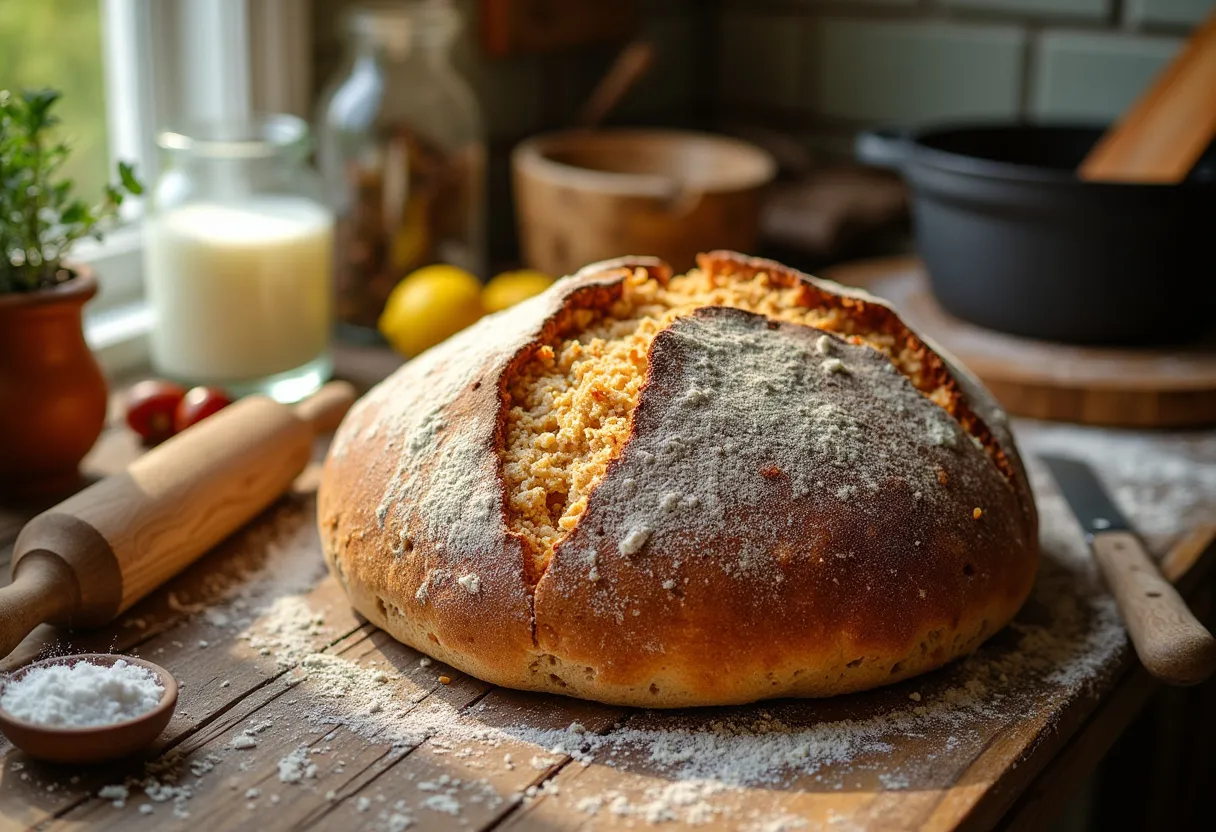
Mastering the Art of Irish Soda Bread: A Spotlight on History and Step-by-Step Guide to Perfecting this Classic Loaf
Published on 9/21/2024
Liam O'Sullivan • 9/21/2024
A Spotlight on History
The humble Irish soda bread is more than just a staple in Irish households; it's a symbol of tradition and the resilience of the Irish spirit. Originating in the early 19th century, this bread emerged at a time when Ireland faced significant economic challenges. Due to a lack of strong wheat native to the country, the Irish turned to the combination of bicarbonate of soda, or baking soda, and sour milk to leaven wheat. This not only made soda bread affordable and quick to prepare but also highlighted a remarkable adaptability in cooking methods.
In a nation where families had little more than open hearths and cast iron pots—also known as bastibles—household bakers embraced this straightforward method. As such, soda bread became a cornerstone of Irish cuisine, served alongside hearty stews, at tea times, and during celebrations. The bread's iconic cross on the top served a dual purpose: to bless the bread and provide easy breaking into quarters, making it perfect for sharing.
Step-by-Step Guide to Perfecting Irish Soda Bread
While the ingredients for Irish soda bread are few, the technique requires a gentle hand and an attentive eye. Follow these steps to achieve that distinctive, rustic loaf.
1. Gather Your Ingredients
- Flour
- Baking soda
- Salt
- Buttermilk or sour milk
These four ingredients form the backbone of any traditional soda bread. While some variations may include sugar or raisins for a sweeter twist, sticking to the basics ensures authenticity.
2. The Mix
In a large bowl, gently combine the flour, baking soda, and salt. Create a well in the center and slowly incorporate the buttermilk, stirring lightly. The key here is to work the dough as little as possible to avoid a tough texture.
3. Shaping the Dough
Turn the dough onto a floured surface and shape it into a round loaf. Using a sharp knife, score a deep cross across the top. This traditional mark isn't just for aesthetic purpose, it also allows the bread to rise and cook evenly.
4. Baking
Place your loaf on a baking tray and into a preheated oven. Set your timer according to desired doneness, generally about 30-40 minutes at 425°F (218°C). Keep an eye (and nose) on it—when the loaf sounds hollow when tapped on the bottom, it's ready.
5. Enjoying Your Masterpiece
The beauty of soda bread lies in its versatility. Enjoy it warm with a spread of butter, alongside a bowl of Irish stew, or simply dipped in a hot cup of tea. It’s about bringing comfort and warmth to the table—a reminder of days gone by and the simple pleasures of life.
A Personal Note from the Kitchen
As a chef in Dublin, I've savored countless loaves of soda bread, each evoking a sense of nostalgia for my childhood days spent in my grandmother’s kitchen. It's more than a dish; it's a tradition passed down through generations. Whether you're a novice baker or a seasoned chef, mastering a loaf of soda bread is truly rewarding—it connects you with the past, while nourishing the present.
Liam O'Sullivan
Head Chef and Culinary Historian | I've been cooking
Liam was born into a large family in Dublin, Ireland, where he was introduced to the warmth and simplicity of Irish comfort food at a young age. He started working in a local pub as a dishwasher, but his enthusiasm for cooking quickly caught the attention of the kitchen staff, who began training him. After years of learning the trade, he became head chef of a well-regarded gastropub, known for its hearty Irish stews, colcannon, and soda bread. Now, Liam runs his own restaurant in Dublin and has written several books on Irish and British culinary traditions.